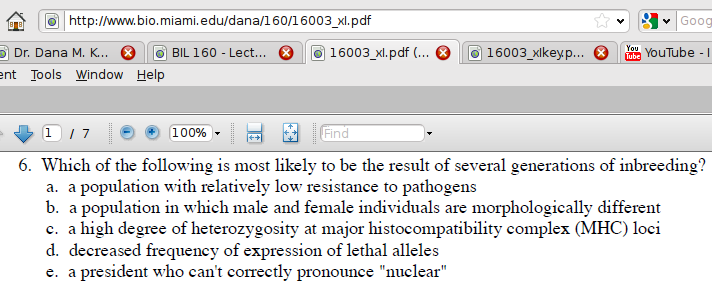Can you look at the following picture and not laugh out loud?
I was looking for explanations on some particular biology-related issues and Google landed me on the website of Dr. Dana M. Krempels, director of undergraduate studies at the Department of Biology of the University of Miami.
As I peered through the interesting lecture notes that she posted there, I came across a few sample exams, one of them containing the question in this screen capture.
Throughout European history
Sure enough, inbreeding is very, very bad. Offspring get immensely greater chances of being affected by recessive or deleterious traits. This risk amplifies, of course, with each newly "inbred" generation.
I am not set out to write an extensive article on inbreeding. However, a brief illustration of its effects on progeny (in the case of humans) comes to mind: the historical cases of genetic disorders due to repeated royal intermarriages. The two prominent examples throughout history are the mandibular prognathism in the Habsburg bloodline and hemophilia in the European royalty.
This photo shows a medal of Charles V (1500-1558), ruler of the Holy Roman Empire and King of Spain, later on. The jaw deformity is clearly visible.
But... back to the point
The reference to the president who cannot properly pronounce "nuclear" was amusing. Even though I am not an American, I can commiserate with those who had to put up with George W. Bush for 8 years.
Here is a a short reminder, in case you find the "nuclear" reference too obscure:






No comments:
Post a Comment